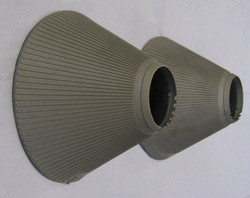Novel materials for high-temperature applications
The space, automotive and energy sectors demand ever-more functional and high-performance materials capable of withstanding harsh environments. In addition, they want them at reasonable cost. A European consortium of research institutes, universities and industrial partners from five countries has met that demand. Scientists working on the EU-funded project SILTRANS(opens in new window) (Micro and nanocrystalline silicide - Refractory metals FGM for materials innovation in transport applications) developed novel in-situ formed HT composites comprising the concept of functionally graded materials (FGMs). Porous skeletons of refractory metal (molybdenum or niobium) have been embedded in a silicide matrix via pressure assisted reactive infiltration. Grading is achieved because silicide forming reactions between Si melt and refractory metal occur predominantly at the surface, creating an oxidation-resistant skin. The innovative reactive infiltration technique for preparing complex, near-net shaped parts with a self-forming oxide coating is a novel proprietary process. The novel FGM showed significantly improved oxidation resistance at HT compared to a conventional molybdenum alloy and much higher fracture toughness at low temperatures compared to traditional silicides. The desired synergy provides the new HT composites enhanced properties when compared with currently most widely used nickel based superalloys. Technology was demonstrated successfully on three different parts, among which was a space structure for mounting thermal protection sheets. The composite survived thermal shock resistance testing, simulating spacecraft re-entry conditions. Aside from the materials and manufacturing technologies, models describing reaction kinetics in the molybdenum-silicide system represent a major contribution to manufacturers. They successfully simulate both liquid and solid state reactions and the effects of barrier coatings on kinetics. SILTRANS' unique FGMs are functionally superior to currently used superalloys and are produced with an industrially valid manufacturing technique. They promise important benefits for both air and ground transport. Lighter and more durable components capable of withstanding harsher conditions will facilitate lower fuel consumption and fewer emissions. Participation by industrial partners ensures rapid market uptake of the novel materials and technologies.







